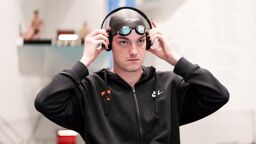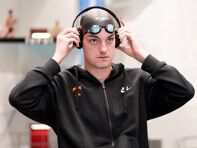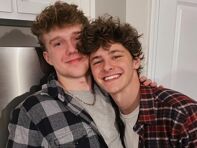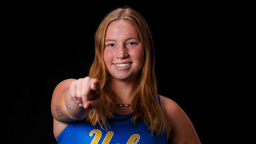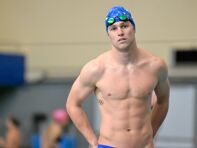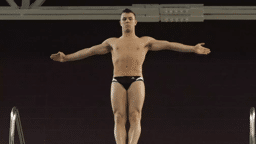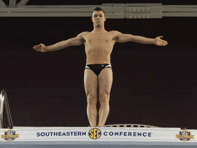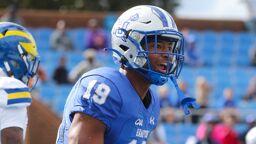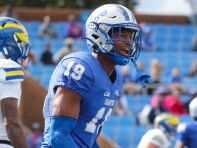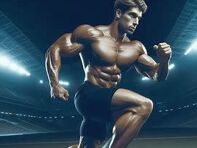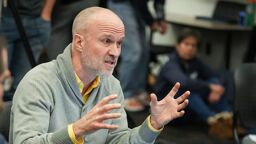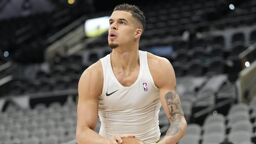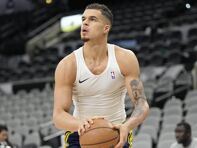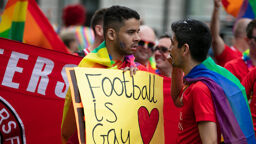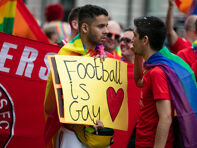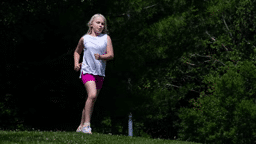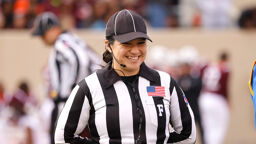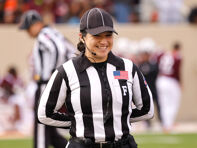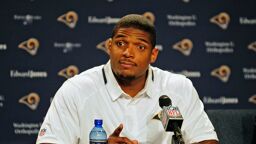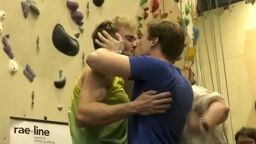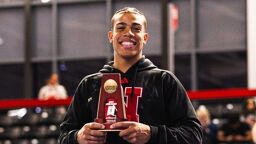It was a flyer tacked to the cafeteria bulletin board in middle school that introduced me to scholastic wrestling.
I was shocked to discover that as a sport, wrestling did not involve costumes or grand entrances through the fog of dry ice. Wrestling was, however, the only winter sport available to sixth graders at my school and there would be no cuts.
Team membership defined what was “normal” for a preadolescent boy. Since I was known for periodically having titanium devices drilled through my flesh to stretch the bones of my arms and legs underneath, I desperately craved normalcy. I also coveted a warm-up jacket with my name on the back. I was positive that slipping into team apparel emblazoned with “SHERR” from shoulder to shoulder would fill me with a dramatic sense of belonging.
When I was 7, I was diagnosed with MHE (Multiple Hereditary Exostoses), a rare orthopedic disorder with no cure or effective treatment that would see hundreds of hard, spiky tumors grow outward from bones and growth plates throughout my body. MHE affects 1 in 50,000 births. My journey with MHE led me through 21 different osteotomies — bone surgeries for tumor removal, deformity correction and bone lengthening.
Much of my time as a child was spent in travel to medical procedures, post-op physical therapies or with titanium devices protruding from my flesh that made me look like a mid-evolution transformer, none of which I can tell you makes finding friends at a new school any easier.
Couple my external complexities with being in the closet and my need to find any affinity group willing to welcome me suddenly becomes understandable. I was the kid who absolutely should not wrestle, yet wrestling’s “no cut” policy was a way to provide me with a sense of acceptance. From the day I first stepped onto the mat, I was bound to a team that simply had to take me. I thought it was as close as I was going to get to closeness with others.

At first, I heard “spaz” from my teammates more than my name, then “dude” as I racked up some wins. “Bennett” arrived with my first championship. Once labeled too fragile, my victories came from pure stubbornness and a regimen of 400 sit-ups a day. As my name advanced on brackets in state and national tournaments, it seemed I was at last accepted; two years in a row I was selected captain of my middle school team and I became a New Jersey State qualifier.
Nonetheless, intimacy and brotherhood still eluded me. In high school in Massachusetts, I was the northern New England champ, a prep national qualifier, a bona fide athlete often featured in the newspaper. Yet I still felt incomplete.
It was during my freshman year of high school that I first started telling people that I was gay. Initially, my closest friends and then my family, everyone I told met my revelation with pure acceptance. In saying this, I am fully aware of the privilege that I had in going to the progressive boarding school that I attended.
Phillips Academy Andover is often described as a liberal bubble and conversations surrounding topics of identity were commonplace in the dorms and for the most part, LGBT students were welcomed with open arms into the community.

Members of my high school wrestling team were unfazed, happy to share the mat with a gay teammate. Because of the love and acceptance I experienced living my truth, I was finally able to find that elusive sense of belonging that always seemed just out of reach. Recognition was the permission to just be me — and with that, I automatically belonged everywhere I was.
Midway through my high school wrestling career, I found myself in a bright medical exam room, watching as three doctors studied the illuminated X-ray pattern of destruction inside me from the unlikely marriage of MHE and wrestling.
Some new and many, many old fractured bone tumors ravaged my knees, shoulder and ribs. Of particular concern was my left wrist. Another surgery was scheduled; the result did not go as well as all had hoped. Although always able to work back to the varsity level after previous surgeries, the cumulative damage by this point was insurmountable. Physically, wrestling was gone, and with it, I feared so was what made me special. Not whole, or included, but special in a different or good way — something I was good at performing.
My high school’s Community and Multicultural Development Office (CAMD) — the external embodiment of all the internal love and peace I felt when I came out — spurred my interest in activism. There I found a new mat to spar on — one of social justice.
Much of the time that I had once spent physically training was now spent organizing forums on topics surrounding ableism and queerness. Social justice conferences became monthly occurrences and I was selected by the faculty and administration to lead a mandatory seminar for sophomore students on topics of identity.
While fulfilled in this new role, I still longed for some type of ambitious physical exertion. Competitors find it hard to leave competition. With my left wrist still (forever) an issue, I focused on sports where I could better use my more dominant and sturdier right side.
After a few years practicing, and without expectation, I tried out for my former college’s tennis team. To my surprise, I was awarded a varsity spot playing fifth singles and second doubles on a team that finished fourth at the NJCAA National Tournament. Now at Cornell University, I am on the varsity table tennis team.
With each new evolution of myself as an athlete, I have enjoyed team camaraderie without my sexuality or disability being a concern.
With each new evolution of myself as an athlete, I have enjoyed team camaraderie without my sexuality or disability being a concern. Often showing up to practice or warming up for a match in my “Be True” gear, I am greeted by teammates or opponents warmly, with inquiries into where to find the apparel themselves. The fears I had as a closeted, pathetically awful wrestler in middle school seem so distant, and yet I remember them — the panic and isolation — that I felt so acutely.
Brotherhood is more than team membership, more than fraternity, more than fellowship — it is cooperation in making the lives of each other better.

We do not need to be completely like-minded and life-similar individuals — or on the same sports teams — to create a close-knit community built from kindness and mutual respect. Opportunities for inclusion abound, and that is why I am telling my story.
There are not many LGBT people with visible and invisible disabilities comfortable in discussing that aspect of them, let alone those also in athletics. I hope this platform reaches other LGBT people with disabilities — in and out of sports — to show them that they are valid and they are not alone. A sense of belonging is a powerful thing.
Bennett Sherr is a sophomore at Cornell University studying Industrial and Labor Relations with a minor in LGBT Studies. He is a member of Cornell’s Varsity Table Tennis Team. He works with numerous organizations, such as the Trevor Project where he is a member of the National Youth Ambassador Council. Bennett can be reached on Instagram @beanieb99 or via email at [email protected].
As for his health, Bennett has been extremely lucky to have not yet developed any malignant tumors. Given their location on the growth plates, all of the benign tumors from the MHE stopped growing when he did. There is a potential for them to become cancerous, but the chances are slim (some estimates say about 5% to 10% of MHE patients will develop some form of sarcoma in their lifetime).
Story editor: Jim Buzinski



